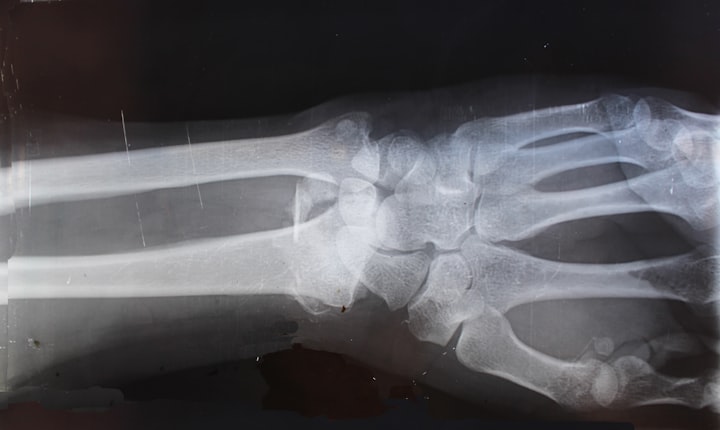Examining The Revolutionary Technological Breakthroughs Of X-ray Equipment
Read On...

In the ever-evolving field of medical imaging, X-ray technology has played a vital role in diagnosing and treating various ailments for over a century. From its humble beginnings to the present day, X-ray equipment has witnessed numerous revolutionary technological breakthroughs that have transformed the way healthcare professionals approach diagnostics. In this article, we will explore some of these groundbreaking advancements and their impact on the field of medical imaging.
One of the most significant breakthroughs in X-ray technology is the development of digital radiography.
Traditionally, X-ray images were captured on photographic film, requiring time-consuming processing and handling. However, with digital radiography, images are captured electronically and can be instantly viewed on a computer screen.
This advancement has not only reduced the waiting time for patients but also improved the overall quality of X-ray images, enabling healthcare professionals to make more accurate diagnoses.
Another revolutionary breakthrough in X-ray equipment is the advent of computed tomography (CT) scanners. CT scanners utilize a series of X-ray images taken from different angles to create cross-sectional images of the body.
This three-dimensional view provides healthcare professionals with detailed insights into the internal structures of organs, bones, and tissues.
The introduction of CT scanners has significantly enhanced diagnostic capabilities, allowing for earlier detection of diseases and more precise treatment planning.
In recent years, the emergence of cone beam computed tomography (CBCT) has further revolutionized X-ray technology, particularly in the field of dentistry and maxillofacial imaging.
CBCT scanners capture high-resolution three-dimensional images of the oral and facial regions with minimal radiation exposure.
This technology has proved invaluable in dental implant planning, orthodontic treatment, and oral surgeries, as it provides accurate anatomical information for precise treatment interventions.
Moreover, the advancements in X-ray detectors have had a profound impact on the quality and efficiency of imaging. Traditional X-ray detectors used photographic films that required manual processing.
However, the introduction of solid-state detectors, such as amorphous silicon and amorphous selenium, has eliminated the need for film and accelerated the imaging process.
These digital detectors are more sensitive to X-rays, allowing for improved image quality, reduced radiation exposure, and enhanced workflow in healthcare settings.
Furthermore, the integration of artificial intelligence (AI) algorithms into X-ray equipment has opened up new possibilities for automated image analysis and interpretation.
AI-powered systems can assist radiologists in detecting abnormalities, identifying patterns, and providing diagnostic support.
This technology has the potential to enhance the efficiency and accuracy of diagnoses, particularly in cases where subtle abnormalities might be overlooked by human observers.
Additionally, advancements in X-ray technology have led to the development of portable and handheld X-ray devices.
These compact and lightweight devices offer convenience and flexibility, allowing healthcare professionals to conduct imaging procedures at the patient's bedside or in remote locations with limited infrastructure.
Portable X-ray equipment has proven invaluable in emergency medicine, intensive care units, and field hospitals, enabling rapid imaging and timely interventions.
In the realm of radiation safety, there have been significant breakthroughs in dose reduction techniques.
With the introduction of low-dose X-ray protocols and optimization algorithms, healthcare professionals can achieve high-quality images while minimizing the radiation dose delivered to the patient.
These advancements prioritize patient safety without compromising diagnostic accuracy, making X-ray imaging a safer procedure for individuals of all ages.
The integration of X-ray technology with other imaging modalities has also contributed to revolutionary breakthroughs in medical diagnostics.
Hybrid imaging systems, such as positron emission tomography-computed tomography (PET-CT) and single-photon emission computed tomography-computed tomography (SPECT-CT), combine the functional information from nuclear medicine techniques with the anatomical details provided by X-ray imaging.
These multimodal imaging approaches offer a comprehensive understanding of disease processes and have proven particularly valuable in oncology, cardiology, and neurology.
In conclusion, X-ray equipment has undergone remarkable advancements, bringing about revolutionary technological breakthroughs in medical imaging.
From digital radiography to CT scanners, cone beam computed tomography to AI integration, these innovations have significantly improved diagnostic capabilities, patient care, and treatment outcomes.
As technology continues to evolve, we can expect further advancements that will shape the future of X-ray equipment, enhancing its role as a cornerstone in modern healthcare.
When you require an X-ray in the future, consider visiting one of Australia's premier imaging diagnostic centers renowned for their utilization of state-of-the-art technologies and cutting-edge equipment.
About the Creator
Christopher David
I am a writer, editor and an avid reader.





Comments
There are no comments for this story
Be the first to respond and start the conversation.